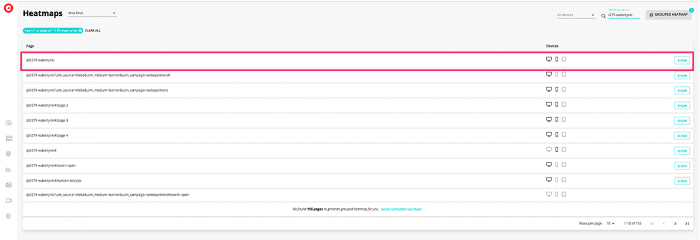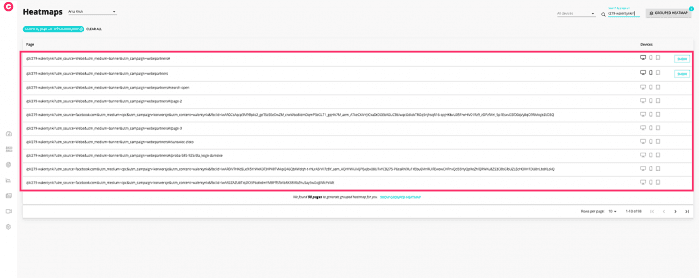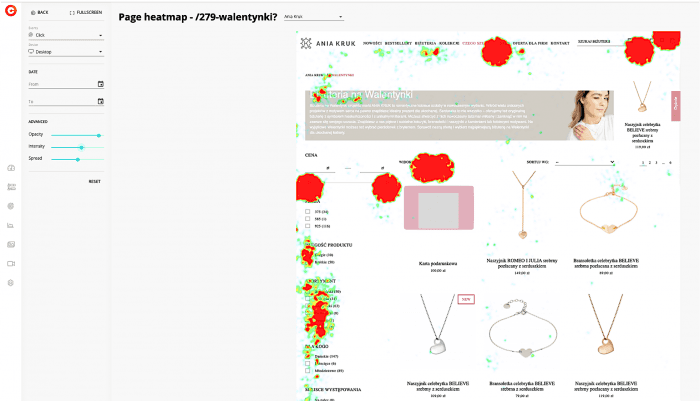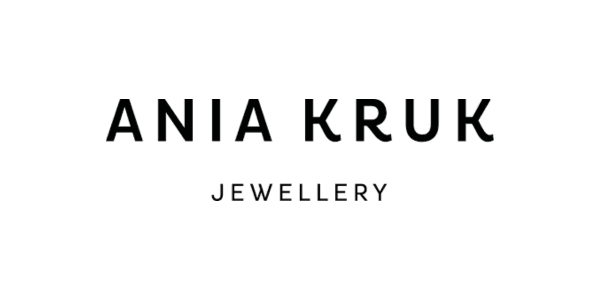3x increase in campaign conversion – Ania Kruk Case Study
Summary
In a quest to refine their campaigns strategy, Aniakruk.pl, a renowned Polish jewelry brand, joined forces with CUX. Their aim? To unlock insights that would spark immediate campaign improvements and shape future initiatives. This partnership was all about blending the art of data-driven decision-making with a grasp of user preferences.
Industry
E-Commerce
Market
B2C
Location
Poland
Scope of Work
Conversion optimization; paid traffic behavior analytics
Goals
Optimize engagement: Elevate ongoing campaigns performance by boosting engagement, conversions, and overall satisfaction.
Future strategy development: Harness insights from user behavior to lay the foundation for upcoming campaigns, ensuring they resonate harmoniously with customer preferences.
Scope of Work
Heatmaps exploration: The automated heatmaps generated by CUX provided a visual narrative of user interactions, clicks, and navigation across the website.
Comparative Analysis: Leveraging CUX's analytics features, Aniakruk.pl gained access to invaluable insights into user behavior patterns. With retroactive analytics which enables learning from past data, CUX performed a meticulous comparison between the overall Valentine's Day website traffic and the traffic specifically generated by the campaign.
Insights
In the case of aniakruk.pl, right after Valentine’s Day, we started the analysis by checking how customers generally behaved on the page with products specially selected for the occasion. We used heatmaps for direct entries and for visits navigating within the Valentine’s Day offer.

By analyzing the clicks on the heatmap, we did not notice any unusual or questionable events. We’ve observed a rather natural, diffused flow of customers, without too much involvement in browsing individual products. Most of the clicks accumulated around the option to choose a specific assortment (on the left).

Filtering: Campaign only traffic
Following our initial analysis, we've chosen to examine how identical entries appeared when accessed by customers who had clearly reached our website through external campaigns. To do this, we simply filtered the entries based on the provided URL.
It's important to note that the web address used in the campaign should include an additional 'tail' to identify where a given user came from e.g. _ fbclid._
We've utilized filtering to compile a list of all the addresses that are of interest to us. Following that, we've generated a grouped heatmap specifically for these addresses (you can find this function in the upper right corner of the app). This type of heatmap allows us to create a collective representation for multiple URLs, particularly for those URLs containing pages with similar structures, such as product pages or campaign landing pages. In the initial analysis, these addresses might only be visible as individual URLs.

In this scenario, the situation differed somewhat from the case of direct entries. Firstly, we noticed a significantly higher user engagement with more frequent clicks (indicated by more red spots). Additionally, the grouped heatmap revealed that customers showed greater enthusiasm for interacting with filtering options rather than clicking directly on the products themselves. They made various attempts to refine their product selection - they were trying all possible ways to narrow down the range of products! Notably, the item in the top menu labeled 'Czego szukasz' [ 'What are you looking for'] was also particularly popular.
Seaching for frustration
Interestingly, we did not see an increased or significant number of clicks in the menu after its expansion. Only a few clicks in the vicinity of the banner. Remember that a heatmap is only a visualization of a single page state. If customers expanded the menu, then in the classic heatmap we will observe clicks “floating in the air”. When in fact they may relate to elements such as pop-ups, widgets or just a sliding menu. From the analysis of the grouped heatmap, we can conclude that customers did not move further on the site. This may suggest that they did not find what they were looking for. A conclusion that is especially emphasized if we go deeper into the analysis.

Changing the data display type to “rage clicks” only confirms our hypothesis. Customers were disappointed after clicking on the aforementioned category. In addition, it gave us valuable information about existing problems. Including the info about usefulness of a slider that allows filtering by prices.
What's intriguing is that we caught a glimpse of customer hesitations – it was as if they were standing at a crossroads, unsure about the best way to have the products presented before them.
Impact
Our analysis revealed that customers lean towards refining their e-commerce experience by narrowing down their search results. This inclination becomes evident through their interactions on the website – behaviors like gravitating towards filtering options, engaging with the "What are you looking for" menu bar, and expressing frustration through "rage clicks" around the price-adjustment slider.
Considering these insights, we've crafted a recommendation for your upcoming campaign:
- strategically center it around segmented offerings, such as products within designated price ranges.
- Furthermore, we also recommended further investigating the usability problems of the price slider. Working out a new solution for it could significantly improve conversion.
Contextual targeting: With a thoughtful strategy in play, Aniakruk.pl strategically segmented their campaigns based on distinct product categories. This approach unlocked a remarkable outcome — threefold increase in conversion rates. This success wasn't a stroke of luck; it was the result of deliberate decision-making grounded in user behavior insights.
Interested in delving deeper into the CUX and Ania Kruk partnership? Discover the detailed story here.
Start your FREE Trial today and start improving your digital user
experience with data-driven decisions.
